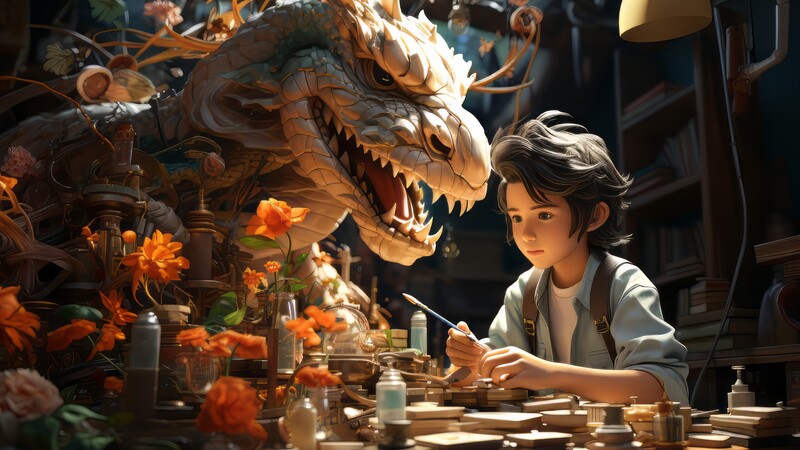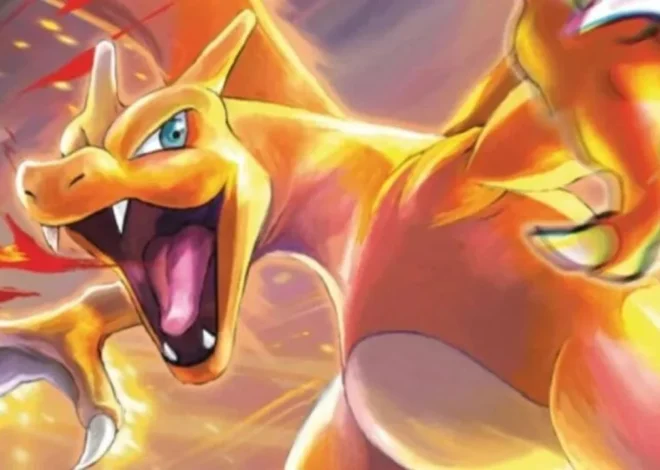
Mastering the Art of Drawing:5z_boyjkm98= Dragon: Step-by-Step Guide
Introduction:
Dragons have captured human imagination for centuries, from ancient myths to modern fantasy. Drawing:5z_boyjkm98= Dragon Whether you’re an aspiring artist or a seasoned professional, learning how to draw a dragon is an exciting challenge that can improve your drawing skills while unleashing your creativity. This article will provide you with a step-by-step guide to drawing a dragon, as well as tips for refining your technique, creating stunning details, and making your artwork stand out.

1. Understand Dragon Anatomy:
Before diving into the drawing process, it’s essential to familiarize yourself with dragon anatomy. A typical dragon design includes elements of various creatures, such as lizards, bats, and dinosaurs.
- Head: Dragons often have elongated heads with horns, spikes, and sharp teeth. Visualize a cross between a crocodile and a snake.
- Body: A muscular and elongated body helps give your dragon a fierce and agile appearance. Incorporate features like scales and defined muscles.
- Wings: Imagine large bat-like wings for a traditional Western dragon, with visible wing bones and membranes.
- Tail: The tail often tapers into a point, sometimes with a spiked or clubbed end for added effect.
- Legs and Claws: Consider strong, clawed limbs, similar to a lion or eagle, to show the dragon’s power.
2. Gather References:
It’s helpful to gather reference images before starting. Study dragons from mythology, movies, and art to get inspiration. Explore different styles, from detailed to cartoon-like, and decide the type of dragon you’d like to draw.
3. Step-by-Step Dragon Drawing Guide:
Step 1: Sketch Basic Shapes
Begin by lightly sketching the basic shapes that will form the dragon’s body. Start with an oval for the head, a larger circle for the body, and a line to indicate the tail’s direction. Add lines for the neck, limbs, and wings to establish the dragon’s overall pose.
Step 2: Outline the Dragon’s Structure
Once you have your basic shapes in place, start refining the dragon’s form by adding outlines. Use curves to shape the neck, head, and tail. Sketch the wings and legs using angular lines for the bones and soft lines for the membranes.
Step 3: Add Details
Now, add finer details to your dragon. Draw the eyes, nose, and mouth on the head. Include teeth, horns, or spikes, depending on the style you want. On the body, add scales and muscle definitions. For the wings, emphasize the bones and veins. Make the tail stand out with spikes or a patterned texture.
Step 4: Refine the Lines
After outlining the entire dragon, go over the lines with a darker pencil or ink to refine and sharpen the details. Make the features more pronounced, such as the dragon’s sharp claws, fierce eyes, and intricate wing structure.
Step 5: Add Shadows and Texture
To make your dragon more lifelike, add shading to emphasize depth and volume. Use light and shadow to show the dragon’s muscles, scales, and the folds in its wings. If your dragon has scales, vary their size and direction for a natural look. Experiment with textures to give your dragon a unique and dynamic appearance.
Step 6: Color Your Dragon (Optional)
If you want to take your drawing to the next level, color it using pencils, markers, or digital tools. Think about what kind of dragon you’re drawing—whether it’s fire-breathing or ice-based—and choose colors that complement its nature. Deep reds, blues, greens, or metallic shades work well for dragons.
4. Expert Tips for Drawing Dragons:
- Be Creative with Design: Dragons can vary widely depending on your imagination. Mix elements from different animals to create a truly unique creature.
- Focus on Proportions: Keep an eye on proportions, especially when drawing the dragon’s wings, body, and tail. The wings should be large enough to lift its body, while the tail adds balance.
- Experiment with Poses: Don’t limit yourself to one static pose. Draw your dragon in flight, roaring, or perched on a mountain to showcase its dynamic nature.
- Use References for Realism: While dragons are fictional, using references from real-life reptiles, bats, and birds can help your dragon look more believable.
5. Why Drawing Dragons Is Great for Skill Development:
Drawing a dragon challenges your artistic abilities in several ways. You’ll work on anatomy, texture, and proportion all at once. It also allows you to practice different shading techniques, and if you choose to color your dragon, you’ll enhance your color theory skills. Plus, dragons are a fun way to push your imagination to its limits.
6. Common Mistakes to Avoid When Drawing Dragons
Even seasoned artists can run into challenges when drawing a dragon. Here are some common mistakes and how to avoid them:
- Overcomplicating the Design: While dragons can be intricate, adding too many features or overly detailed textures can clutter the drawing. Focus on the key elements like the head, wings, and tail, and gradually build complexity.
- Ignoring Anatomy: Dragons are mythical, but they still need to feel grounded in reality. Pay attention to muscle structure, wing placement, and how their limbs would move. A dragon that looks too stiff or awkward can lose its powerful appeal.
- Unbalanced Proportions: When drawing a dragon, the wings and tail should complement the body. Oversized or undersized wings can make the dragon look less convincing. Think about the aerodynamics of a creature that could actually fly.
- Flat Shading: Skipping proper shading or using flat shading makes your dragon look two-dimensional. Use light sources and shadowing to create depth and make your dragon pop off the page.
- Inconsistent Textures: If your dragon has scales or a certain texture, make sure they follow the form of the body. Random placement of scales or inconsistent patterns can disrupt the flow of the drawing.
7. Popular Dragon Drawing Styles
As you practice, you might explore different styles of dragon art. Here are a few popular styles you can experiment with:
1. Western Dragons
These are the classic, fire-breathing dragons often seen in medieval European lore. Western dragons typically have large, muscular bodies, leathery wings, and massive claws. They’re often depicted as aggressive or powerful creatures guarding treasure.
2. Eastern Dragons
Eastern or Chinese dragons are long, serpentine creatures with no wings but still possess the ability to fly. They often symbolize wisdom, strength, and good luck in Asian culture. These dragons have intricate whiskers, horns, and flowing bodies, offering a more elegant and mystical look.
3. Cartoon Dragons
A more playful and simplified approach to dragon drawing, cartoon dragons are often exaggerated with big eyes, short bodies, and bright colors. This style works well for younger audiences or whimsical illustrations.
4. Fantasy and Hybrid Dragons
These dragons are influenced by modern fantasy books, video games, and films. Hybrid dragons can incorporate features from other mythical creatures or animals. You might see dragons with bird-like wings, bioluminescent scales, or insect-like features.
8. Tools and Materials for Dragon Drawing
The tools you use can significantly impact the quality of your dragon drawing. Here are some recommendations for various mediums:
Pencil and Paper
This is the most accessible and versatile medium. Use a range of pencils (H for lighter lines, B for darker, shading) to create detailed dragon sketches.
Ink
Inking your dragon drawing gives it a more polished and refined look. Fine-tip pens are great for outlining, while brush pens can be used to add bold strokes.
Colored Pencils and Markers
Colored pencils allow for gradual layering of colors and are great for blending shades, especially for a dragon’s scales and wings. Markers offer a vibrant, bold finish.
Digital Drawing Tablets
For those who prefer digital art, drawing tablets like Wacom or iPads with Procreate offer endless possibilities. You can experiment with layers, textures, and lighting effects that may be harder to achieve with traditional mediums.
9. How to Improve Your Dragon Drawings Over Time
To get better at drawing dragons, continuous practice is key. Here are some ways to track your progress and improve:
- Draw Dragons Regularly: Set aside time each week to draw dragons in different poses, perspectives, and styles. The more you practice, the better you’ll become.
- Study Anatomy: While dragons are fictional, studying the anatomy of real reptiles, birds, and even mammals will help you create more believable dragons.
- Take Online Tutorials: Platforms like YouTube, Skillshare, and Udemy offer numerous tutorials by professional artists who can help guide you through the process.
- Join Art Communities: Share your dragon drawings on platforms like DeviantArt or Reddit’s r/learnart. Getting feedback from fellow artists can accelerate your learning process.
- Experiment with Styles: Don’t limit yourself to one style or method. Try sketching quick cartoon dragons one day and intricate, detailed creatures the next. This versatility will broaden your artistic abilities.
10. Conclusion: Unleash Your Inner Dragon Artist
Drawing dragons is a fantastic way to stretch your imagination and build your skills as an artist. Whether you’re creating fierce fire-breathers or elegant, mythical serpents, each dragon drawing will help you master anatomy, shading, and texture. Follow this guide, avoid common mistakes, and experiment with different styles and tools to see your dragons evolve. With time and practice, your dragon art will soar to new heights.
Conclusion:
Learning how to draw a dragon is both a fun and educational experience that helps artists of all levels enhance their skills. By following these steps, you’ll create a dragon that showcases your creativity and technical ability. Whether you’re designing a fearsome fire-breather or a majestic, ethereal creature, each dragon you draw will bring your artistic vision to life.
For more great updates keep visiting TechWies




